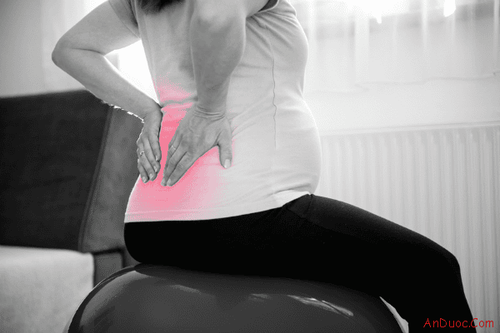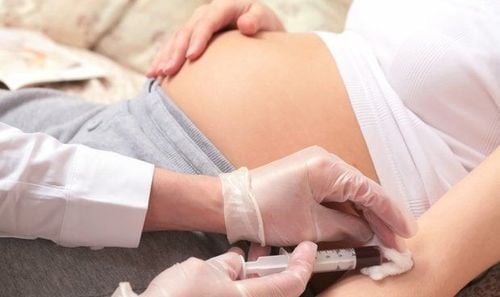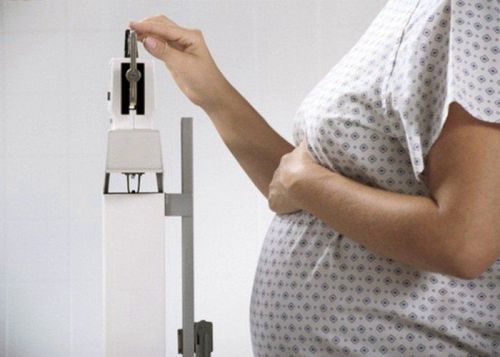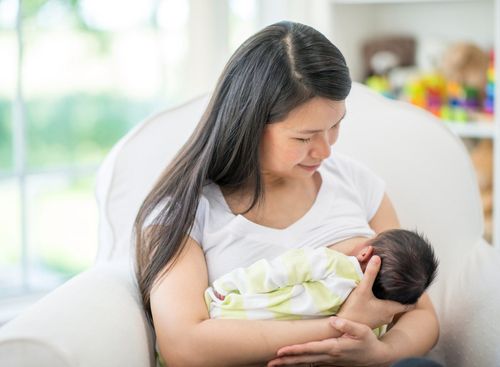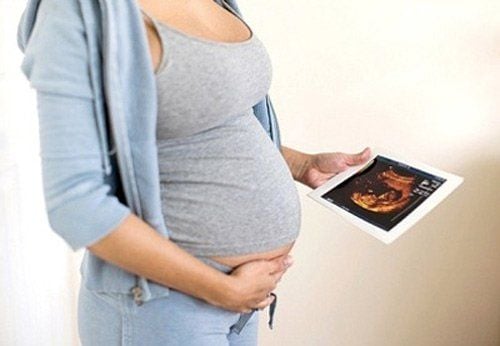This is an automatically translated article.
The article is professionally consulted by Dr., Doctor Ngo Thi Uyen - Obstetrician and Gynecologist - Department of Obstetrics and Gynecology - Vinmec Nha Trang International General HospitalFetal development begins soon after conception. This article will give some information about the growth and development of baby angels in the womb.
1. Fetal development: The first trimester
Mother is pregnant. Congratulations! You will no doubt spend the months ahead wondering how your baby is growing and developing. What will your baby look like? How old is your friend? When will the mother feel the baby's movements? Fetal development usually follows a predictable schedule. Let's find out what happens in the first three months by referring to this relative weekly calendar.Week one and two: Wind up! It sounds strange, but actually women are not really pregnant during the first and second weeks. To calculate the due date, doctors usually count 40 weeks from the first day of the last period, that is, include the menstrual cycle into pregnancy, even though the woman is not pregnant at that time.
3rd week: Fertilization The sperm and egg meet in one of the fallopian tubes to form a single-celled entity called a zygote. If more than one egg is released and fertilized, or if the fertilized egg splits into two, the woman may have more than one zygote.
The zygote usually has 46 chromosomes - 23 from the biological mother and 23 from the biological father. These chromosomes help determine your baby's sex and physical characteristics.
Immediately after fertilization, the zygote moves down the fallopian tube towards the uterus. At the same time, it will begin to divide to form a cluster of cells resembling a small raspberry - a mulberry embryo.
Trắc nghiệm: Bạn có hiểu đúng về dấu hiệu mang thai sớm?
Các dấu hiệu mang thai sớm không phải chỉ mỗi trễ kinh mà còn có rất nhiều dấu hiệu khác như xuất huyết âm đạo, ngực căng tức,… Điểm xem bạn biết được bao nhiêu dấu hiệu mang thai sớm thông qua bài trắc nghiệm này nhé!
4 Week: Nesting The little ball of rapidly dividing cells - called blastocysts - begins to burrow into the lining of the uterus (endometrium). This process is called nesting.
In the blastocyst, the inner group of cells becomes the embryo. The outer layer will make up part of the placenta, the organ that will nourish your baby throughout your pregnancy.
5th week: Increase in hormone levels Week 5 of pregnancy – or the third week from conception, the level of hCG hormone secreted by the blastocyst rapidly increases. It signals the ovaries to stop ovulating and produce more estrogen and progesterone. Elevated levels of this hormone stop the menstrual cycle, often the first sign of pregnancy, and promote placental growth. The embryo is now composed of three layers. The top layer - the ectoderm - will give rise to the outermost layer of skin, the central and peripheral nervous system, the eyes and the inner ear.
The baby's heart and primitive circulatory system will form in the middle layer of cells - the dermis. This layer of cells will also serve as the foundation for your baby's bones, ligaments, kidneys, and most of his reproductive organs.
The inner layer of cells – the endoderm – is where your baby's lungs and intestines will develop.
6: When the neural tube is closed During this week, your baby will grow very quickly, after only four weeks from conception, the neural tube running along the baby's back will close. The brain and spinal cord will develop from this neural tube. The heart and other organs also begin to take shape.
The structures essential for the development of the eyes and ears begin to develop. The beautiful little buds will later become arms. Your baby's body begins to take the form of the letter C.
7th week: Early development Week 7 of pregnancy, or week 5 from conception, your baby's brain and face are developing. The sagging of the face causes the nose to rise, and forms the first lines of the retina.
The lower extremity buds - which will later become beautiful legs appear and the little hand buds that have grown since last week are now in the shape of tiny paddles.

8th week: Baby's nose takes shape. 8th week of pregnancy, baby's lower limb buds develop into paddle shape. Pretty fingers began to take shape. The small protrusions that outline the baby's future scalloped ears develop and the eyes become clear. The upper lip and nose have formed. The torso and neck begin to straighten.
By the end of this week, your baby is about half an inch (11-14 mm) in length.
9th week: Beautiful toes In the 9th week of pregnancy, baby's arms start to develop and elbows appear. Now we can see the little toes and the shape of the eyelids. The baby's head is very large, but the chin contour is still not clear.
By the end of this week, your baby's rump will be a little less than 3⁄4 inches (16 - 18mm) – about the diameter of a dime.
10th week: Baby's elbows can fold. Week 10 of pregnancy, baby's head begins to rounder. Your little one can now bend his elbow. The membrane between the fingers and toes is lost, and the fingers are also longer. Eyelids and outer ears begin to develop. The umbilical cord is now clearly visible.
11th week: Genital organs develop At the beginning of the 11th week of pregnancy, your baby's head length still accounts for about half of its body length. However, your baby's body is starting to develop to keep up with the growth momentum.
At this point, the mother's little friend is officially called a fetus. This week, your baby's face is very wide, eyes separate, eyelids fused, and ears lowered. Tooth buds appear. Red blood cells are starting to form in your baby's liver. By the end of this week, your baby's external genitalia should begin to develop into a penis or clitoris and labia.
At this point, your baby may be about 2 inches (50 mm) from head to bottom – as short as the short side of a credit card – and weigh almost 8 grams.
12th week: Nails take shape Week 12 of pregnancy, beautiful nails are emerging. Your baby's face is now clearer. The intestines are now also in the abdomen. By now, your baby should be about 61 mm long from crown to rump, and weigh about 14 grams.
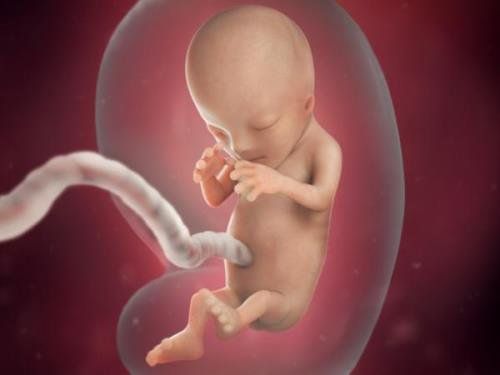
2. Fetal development: Second trimester
Fetal development takes on new meaning in the second trimester of pregnancy. Highlights of this stage include learning the baby's sex and feeling the baby's movements. Two months ago, your baby was just a cluster of cells. Now she has organs, nerves and muscles. Let's find out what happens in the second trimester by consulting this relative weekly calendar.
13th Week: Baby Urine Thirteen weeks into pregnancy, or 11 weeks after conception, the baby begins to make urine and releases it into the amniotic sac, creating amniotic fluid. Yes, you read it right! Your baby swallows amniotic fluid and then urinates into the amniotic sac, creating amniotic fluid.
Your baby's bones are starting to harden, especially in the head and long bones. Your baby's skin is still thin and transparent, but it will start to thicken soon.
14th week: Your baby's sex is becoming clearer By the fourteenth week of pregnancy, or 12 weeks after conception, your baby's neck has become clearer and the lower limbs are well developed. Red blood cells are forming in your baby's spleen.
The sex of the baby will become clear this week or in the coming weeks.
As of now, your baby can be almost 87 mm from head to rump and weigh about 45 grams.
15 Weeks: Scalp Forming Fifteen weeks, or 13 weeks after conception, your baby is developing rapidly. Bone growth continues and should show up on ultrasound images over the next few weeks. Your baby's hair and scalp are also forming.
16th week: Baby's eyes can move. 16th week of pregnancy, your little one's head is up. Her eyes may move slowly. The ears are also moving closer to the final position.
The movements of the limbs are gradually smoother and can be detected during ultrasound. However, the movements are still so light that you still won't notice!
Your baby has a head-butt length of about 120 mm and weighs nearly 110 grams.
17 Week: Toenails have appeared Week 17 of pregnancy, or 15 weeks from conception, tiny toenails have appeared.
Mom's baby is becoming more and more active in the amniotic sac, rolling and flipping. Your baby's heart pumps more than 47 liters of blood every day.
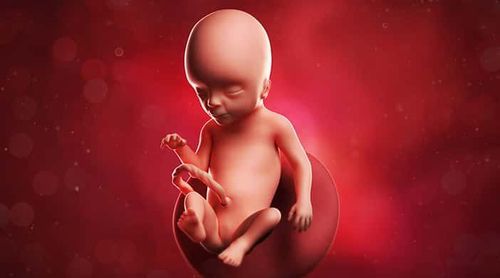
18th week: Baby begins to hear the sounds of the world around. Week 18 of pregnancy, baby's ears begin to stand on either side of his head, he can hear sounds. Eyes are starting to move forward. Your baby's digestive system is starting to work.
At this time, your baby is about 140mm in length, and weighs about 200 grams.
19th week: Baby wears protective coat. 19th week of pregnancy, growth slows down. A waxy, cheese-like layer known as irritant begins to coat the baby. This substance helps to protect baby's sensitive skin against corrosion, cracking and scleroderma caused by contact with amniotic fluid.
For girls, the uterus and vaginal tract are being formed
20th week: Halfway So you're halfway through your pregnancy, 18 weeks from conception. At this time, the mother can already feel the baby's movements. Your baby usually sleeps and wakes up. She may be awakened by the noise or movement of the mother.
Your baby has a head-butt length of about 160mm, and a weight of about 320 grams.
21st week: Your baby can already suck on his thumb Week 21 of pregnancy, your baby is completely covered by a soft layer of hair called fluff. This layer of hair has the effect of keeping the substance on the skin.
The sucking reflex is developing, so now your baby is starting to suck the thumb.
22nd week: Your baby starts to grow hair Week 22 of pregnancy, we can see your little hair and eyebrows. Brown fat - heat producing organ - Pregnancy is forming.
For boys, the testicles have begun to descend
At this point, your baby is about 190 mm from head to rump and weighs about 460 grams.
23rd week: Forming fingerprints and footprints Week 23 of pregnancy, baby can move eyeballs faster. Ripples begin to form in the palms of the hands and feet, which is the beginning of later hand and foot prints.
Your baby may start to hiccup, making jerky movements.
24th week: Wrinkled baby skin Week 24 of pregnancy, the baby's skin is wrinkled, transparent and pinkish red because of the visible capillary blood.
The length of your baby's rump at this week of pregnancy is about 210 mm and weighs 630 grams.
25th week: Baby responds to mother's voice Week 25 of pregnancy, baby can respond with movements to familiar sounds such as mother's voice.
Baby spends most of the time in rapid eye movement sleep, that is, sleep when the eyes are moving very quickly as soon as the eyelids are closed.
26th week: Baby's lungs develop Week 26 of pregnancy, your baby's lungs start to produce surfactant, which allows the air sacs in the lungs to inflate - and keep them from collapsing and stick together as they deflate.
At this time, the length of the baby's rump is about 230 mm, and the weight is equivalent to 820 grams.
27th week: End of 2nd trimester of pregnancy This gestational week marks the end of 2nd trimester. 27th week of pregnancy, the baby's nervous system continues to mature. Baby is still storing fat, making baby's skin look smoother.

3. Fetal development process: Last quarter
Fetal development continues in the last trimester of pregnancy. Your baby will open his eyes, gain weight, and prepare for birth.
The time to give birth is near! By now, you must be very excited to meet your angel in person. Your uterus is still a busy place with activities. Let's find out what happens in the last trimester of pregnancy by referring to this relative weekly schedule.
28 Week: Baby's Eyes Partially Open At 28 weeks of pregnancy, your baby's eyelids can partially open and eyelashes have just formed. The central nervous system can direct rhythmic breathing and control body temperature.
At this time, the baby's rump length is about 250 mm, and it weighs about 1000 grams.
29th week: Baby kicks and stretches Week 29 of the cycle, your baby can kick, stretch and do grasping movements
30th week: Baby grows hair 30th week of pregnancy, Your baby's eyes may open wide. Your baby will have beautiful hair this week of pregnancy. Red blood cells are being made in your baby's bone marrow.
Baby's current head-butt length is 270mm and weight is about 1300 grams.
31st week: Baby gaining weight rapidly Week 31 of pregnancy, your baby has almost completed the major development processes. Time to gain weight.
32nd week: Baby learns to breathe. 32nd week of pregnancy, baby's toenails are visible.
The soft fluff that covered your baby's skin over the past few months is starting to fall out this week.
Currently, your baby has a head-butt length of 280mm and weighs about 1700 grams.
33rd week: Baby responds to light Week 33 of pregnancy, your baby's pupils may change in response to light stimulation. Your little bones are hardening. However, the skull remains soft and flexible.
34th week: Baby grows nails Week 34 of pregnancy, baby's fingernails are long to the tips of the fingers.
Currently the baby's head and bottom length is 300 mm, weight is about 2100 grams.
35th week: Baby's skin is rosy and soft Week 35 of pregnancy, baby's skin becomes rosy and soft. The baby's limbs look cute chubby.
36 weeks: Baby occupies most of the amniotic sac Week 36 of pregnancy, the cramped condition inside the uterus makes it more difficult for the baby to move, but you can still feel it when the baby stretches, curls and sits wiggle.
37th week: Baby can turn head down. 37th week of pregnancy, baby has an important change.
In preparation for birth, the baby's head may begin to move into the pelvic cavity. If the baby does not turn his head down, the doctor will advise the mother on how to handle this problem.
38 Week: Baby grows toenails Week 38 of pregnancy, the circumference of the baby's head and belly are almost equal.
Baby's toenails have reached the tip of the limb. The baby's fluff has almost completely fallen off. Currently, the baby's weight is about 2900 grams.
39th week: Baby's breasts protrude Week 39 of pregnancy, your baby's breasts become more protruding. In boys, the testicles continue to descend into the scrotum. Fat is being added throughout the baby's body to keep him warm after birth.
40th week: The due date is coming. Week 40 of pregnancy, or 38 weeks from conception, the length of the baby's rump is about 360 mm, and the weight is about 3200 grams. Remember, though, that healthy babies vary in length and weight.
Don't worry if your due date comes and goes without any sign of labor. The due date is simply based on the predicted date your baby will be 40 weeks old. But it doesn't predict the exact date of the baby's birth. It is normal to give birth before or after the due date.
Surely, reading this far, you have seen that the growing fetus in the mother's womb is really a miracle that nature has bestowed on women, right? But to fulfill the mission and help the fetus develop healthy during pregnancy and after birth, the first thing to do is that you and your husband should check your reproductive health 3-5 months before becoming pregnant, then carry out full vaccination with vaccines to prevent dangerous diseases that can affect the health of mother and baby during pregnancy.
Vinmec International General Hospital offers a Package Maternity Care Program for pregnant women right from the first months of pregnancy with a full range of antenatal care visits, periodical 3D and 4D ultrasounds and routine tests to ensure that the mother is healthy and the fetus is developing comprehensively. Pregnant women will no longer be alone when entering labor because having a loved one to help them during childbirth always brings peace of mind and happiness.
Mother and baby will receive comprehensive care: Before, during and after birth. Mother will be performed health check-ups, especially thyroid screening, Rubella test; Testing for parasites transmitted from mother to child. The baby will be screened before birth and after birth to help screen for abnormal diseases and birth defects right from the womb. In particular, at Vinmec, doctors will analyze the results and provide genetic counseling for prenatal screening.
In addition, the complete "painless delivery" service during and after delivery using non-morphine epidural and neuromuscular anaesthesia will remove the fear of childbirth for many mothers. During the birth process, the mother will be guided by the midwives on how to push and breathe properly, the baby will be born in just 10-15 minutes. After birth, the baby will be cared for in a sterile room before being returned to the mother.
Pregnant women will rest in a high-class hospital room, designed according to international hotel standards, 1 mother 1 room with full facilities and modern equipment. Mothers will be consulted by nutritionists on how to feed the baby before being discharged from the hospital. Postpartum follow-up with both mother and baby with leading Obstetricians and Paediatricians.
Please dial HOTLINE for more information or register for an appointment HERE. Download MyVinmec app to make appointments faster and to manage your bookings easily.
Reference source: Webmd.com



